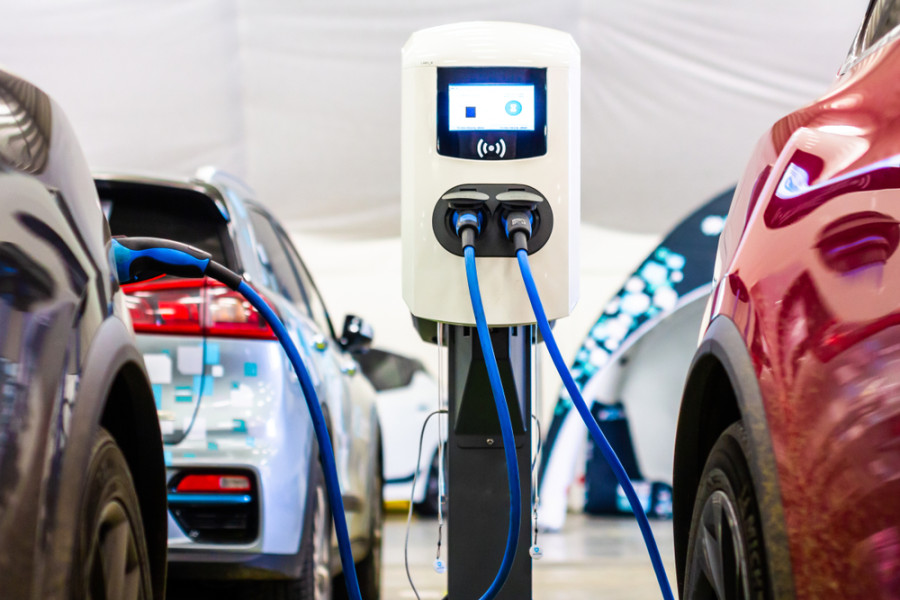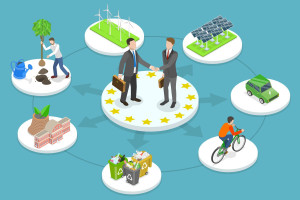Columns
Why Nepal needs an EV revolution
Implementing affordable and replicable emission-reduction solutions is no longer optional.
Gao Liang
A revolution is unfolding across Nepal, this time through Electric Vehicles (EVs) in the automobile sector. In recent years, new EV models have taken the centre stage in Kathmandu’s auto shows. Using EVs has become a new trend in the country. When I see Nepalis using electric-powered buses, vans and three-wheelers in rural villages and cities outside Kathmandu, I feel the absorption is now at a new level.
For Nepal, using EVs is not just about growth in its green energy. It has a broader meaning about leading the issue by setting an example on the world stage. Then it comes to its journey towards energy autonomy, which boosts its political confidence in the region.
As one of the climate-vulnerable nations, rapidly implementing ‘affordable and replicable’ emission-reduction solutions is no longer optional for Nepal. Over the past two years, approximately 70 percent of four-wheel passenger vehicles Nepal imported during the fiscal year (FY) 2024-25 were EVs. Within just a few years, EVs have evolved from niche products to mainstream consumer choices. This represents not only a technological shift in energy and transportation but a profound transformation poised to reshape Nepal’s energy security and economic structure. But are policymakers prepared to seize its opportunities and address its challenges?
Nepal, with an installed capacity of over 3,300 megawatts and ever-increasing further potential, awaits unlocking. The synergy between hydropower and EVs signals a structural shift in the nation’s transportation and energy consumption patterns. Replacing large volumes of imported fossil fuels with locally generated clean electricity reduces foreign exchange outflows, improves urban air quality and advances carbon neutrality goals. In the long run, transportation electrification will bolster Nepal’s energy security, thereby enhancing its economic and political independence.
The application of EVs should not be confined to personal or family use. It would be wise for the Nepal government to shift its focus towards developing an EV-powered public transportation system. Building a robust network of electric buses and other public transport vehicles, supported by strategically placed charging infrastructure along highways, can create a comprehensive domestic new-energy public transit and logistics system.
China is now leading the EV market, but the fact remains that its adoption is accelerating worldwide. Traditional automakers worldwide are heavily investing in new energy vehicles. In India, major manufacturers like Tata and Mahindra are driving significant EV research and development, demonstrating that Chinese brands like BYD do not solely propel the market. Nepal, too, can leverage international partnerships to advance localised production and play a meaningful role in this global trend. Exploring collaborations with Chinese manufacturers to produce EVs tailored for the South Asian market within Nepal is a viable pathway.
Lessons from China
The core logic of Nepal’s existing policies is to maintain and expand the tax advantages of EVs over internal combustion engine (ICE) vehicles, ensuring lower operating costs to increase EV ownership. Crucially, electrification extends beyond transportation; it is intrinsically linked to the optimisation of the power system and the broader regulatory framework.
China, as the world’s most mature EV market, highlights that a stable and forward-looking policy environment is key to sustained development. Beijing has implemented a comprehensive ‘three-pronged’ policy approach combining fiscal subsidies, tax incentives and supporting infrastructure development. Simultaneously, it established information-sharing and coordination mechanisms between the power grid and transportation sectors to efficiently integrate EVs with renewable energy. These practices offer valuable insights for Nepal. While preserving tax advantages, Nepal can proactively plan for standardised and intelligent charging networks and establish cross-departmental coordination mechanisms to maximise the synergy between EV growth and its hydropower resources. Such policies require multi-ministerial coordination and consistent incentive signals from policymakers.
Additionally, Nepal’s current EV focus leans heavily towards imports and usage. The government can also adopt proactive strategies to build a holistic industry ecosystem, including services. This involves addressing potential challenges like battery disposal and recycling. Here, China’s experience is again instructive, having established comprehensive battery recycling regulations and systems for effective waste management. Nepal can emulate these practices by investing in recycling facilities and enforcing strict disposal protocols to mitigate environmental risks. Implementing a battery lifecycle management system covering collection, transportation, dismantling and material recovery—backed by policy incentives and oversight—is essential.
Techno-political landscape
In recent years, some countries have seen a trend of linking EV technology to geopolitics, particularly concerning Chinese-made vehicles. This has led to exaggerated concerns over data security and supply chain vulnerabilities, sometimes used to justify imposing high tariffs on Chinese EVs—ostensibly to create space for domestic industries in the competitive landscape.
While such moves may stem from domestic political or economic competition, replicating this path of ‘techno-politicisation’ does not serve Nepal’s national interest. To a larger context, Nepal’s more pressing task—and a significant public expectation—is ensuring consumers have access to affordable, reliable, safe and eco-friendly transportation to achieve broader economic and social development goals.
Nepal does not need to take sides in the power competition. Instead, it can uphold open market principles while employing measures like spot checks, certification and collaboration with manufacturers to ensure technology and data security. Market access should be determined by facts and rules, not political labels. This approach protects consumer interests and prevents international political disputes from derailing the energy transition.
Developmental challenges require developmental solutions. Data privacy concerns must be addressed through robust regulations and transparency. The effective approach is not indiscriminately excluding products based on country of origin, but establishing uniform, transparent quality and safety standards, allowing all compliant products to compete fairly. Chinese EVs, including BYD models, are exported globally, adhering to international standards and regulations. Their widespread global presence inherently counters unsubstantiated allegations of privacy risks.
The road ahead
The rapid growth of Nepal’s new energy vehicle market signifies a consumer-driven revolution entering an accelerated phase. Abundant clean electricity, high market acceptance and clear policy direction collectively create an optimal window for rapid transformation. Moving forward, it is recommended that Nepal sustain the price and tax advantages favouring EVs over internal combustion engine (ICE) vehicles to maintain consumer cost incentives. Concurrently, expanding the charging network to make recharging as convenient as refuelling is vital.
Above all, Nepal must continue to adhere to open, fair and standards-based market principles, while seeking to avoid the politicisation of technology and products. This is not merely a pragmatic choice for combating climate change; it is the essential pathway for Nepal towards energy independence and sustainable development.




 13.12°C Kathmandu
13.12°C Kathmandu













%20(1).jpg&w=300&height=200)

